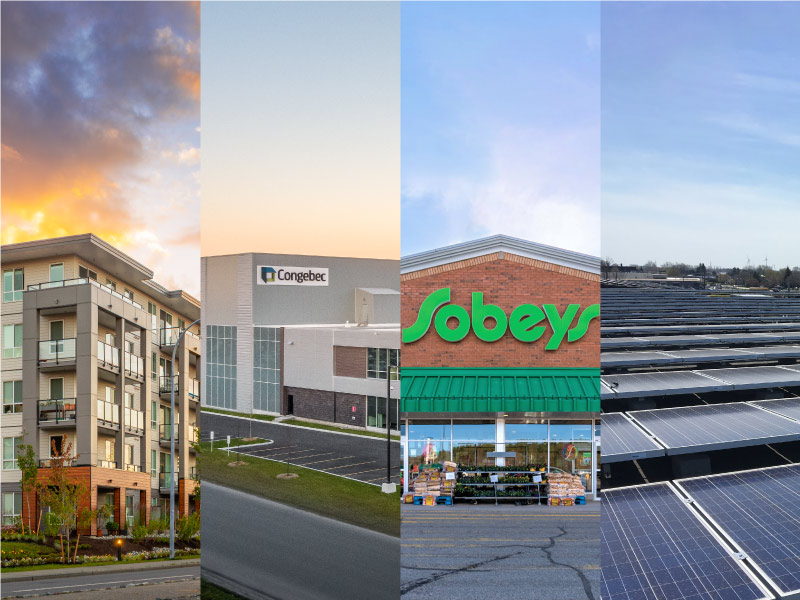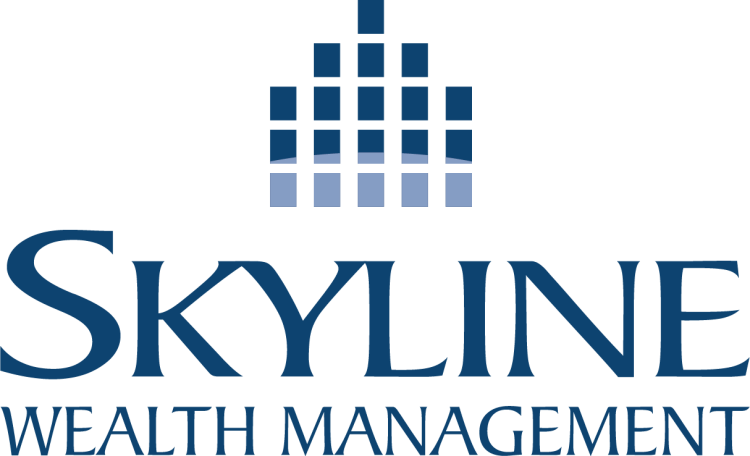
PAID CONTENT
Canada has become one of the fastest-growing countries in the G7,1 with its population growth currently outpacing even China and India.2 In 2023, Canada’s population reached a record high of 40.77 million with an influx of 1.27 million people, up 3.2% from 2022, marking the highest growth since 1957.3
According to StatsCan, 97.6 % of Canada’s population growth in 2023 came from international migration.4 In fact, from January to October 2023, Canada accepted more than 1 million new residents, with another 1.5 million expected over the next three years.5 Canada is already facing a lack of housing supply that has hit crisis levels, and the Canadian Mortgage and Housing Corp. (CMHC) estimates that in order to restore housing affordability and meet growing demand, the country needs to build 3.5 million more homes by 2030.6
Rapid population growth is not without its challenges, but it also spurs on opportunities for sectors rooted in the population’s essential needs, such as real estate and clean energy infrastructure. Immigration in particular plays an integral role in Canada’s economic growth, driving up the demand for housing, places to shop, product warehousing, distribution, and logistics facilities, and energy production.
The Current Economic Landscape in Canada
An increasing population spurred by immigration can promote economic growth. Newcomers not only increase overall consumption of goods and services, but they also add supply to a tight labour market.7
“As Canada experiences population growth due to both immigration and natural increase, we are seeing a trend of ‘de-urbanization’ where residents are moving away from major markets like Toronto and Vancouver,”
said Wayne Byrd, Chief Financial Officer, Skyline Group of Companies.
“They are instead choosing smaller, secondary communities that offer comparably affordable housing and an overall lower cost of living, which may equate to an improved quality of life. As the population grows, these secondary communities present valuable opportunities for investors and developers alike.”
Demand for essential assets continues to rise in these markets, attracting new commercial investment to meet the needs of a growing population.
Essential Assets as a Perpetually Strong Investment
While some sectors, such as office real estate, remain under pressure years after the initial economic effects of COVID-19, other asset classes are thriving and continuing to find growth opportunities. Essential asset classes—those considered indispensable to the economy—are particularly resilient to any market environment or economic cycle, and receive the largest benefit from immigration and population growth:
Multi-residential Real Estate
Demand for high-quality rental housing remains high, and supply has not been able to keep up with demand—now not only in urban areas, but also in secondary markets. According to CMHC’s 2024 Housing Outlook, many households continue to struggle to afford homes, leading to increased demand for rentals—which is further fueled by immigration due to newcomers tending to rent upon arrival in Canada.8
“As we open our doors to 500,000 new Canadians each year, the current economic environment boils down to demand significantly outpacing supply,” said Wayne Byrd, Chief Financial Officer, Skyline Group of Companies.
“Rental apartments not only remain one of the most affordable types of housing, but they are also the housing choice of many newcomers to Canada. While demand has hit a crisis point in many of our major population centres, it has also steeply climbed in many outlying secondary and tertiary markets. It has become more crucial than ever for new, high-quality, purpose-built rental housing to be delivered in those areas. Investment in these markets can help accelerate Canada’s progress toward meeting its housing supply targets, in addition to presenting a strong opportunity.”
Retail Real Estate
When it comes to retail, there is a distinction between the “must haves” (essential retail, such as grocery and pharmacy) and the “nice-to-haves.” In-person essential retail-anchored real estate has shown lasting resilience amid recent economic uncertainty. CBRE’s 2024 Canada Real Estate Market Outlook noted “limited vacancy amongst the most in-demand formats, namely grocery-anchored centres.”9
“As the population grows incrementally, so too does the demand for essential goods retailers: grocery stores, pharmacies, quick service restaurants, et cetera,” said Byrd.
“Further, in secondary and tertiary markets, these essentials-based retail properties are often the singular, or near-singular, community shopping hub in the area, essentially creating an additional level of built-in resilience for this type of asset.”
Industrial Real Estate
As demand heightens for essential consumer products, it also drives the need for purpose-built storage, warehousing, distribution, and logistics centres for these goods.
“Population growth not only spurs demand for convenient shopping locations for essential products, but all the infrastructure surrounding those goods, including their storage and delivery,” said Byrd.
“Additionally, the current trend of de-urbanization further increases the need for warehouse and distribution space, to allow for the more efficient movement of goods to Canada’s secondary markets.”
Energy Infrastructure
High levels of immigration are a key driver of increasing energy demand. The Canada Energy Regulator predicts that energy demand in Canada will grow as much as 135% by 2050.10
“Demand for energy is increasing right alongside population growth, and just like housing, essential retail, and distribution, Canada needs to increase its energy capacity in order to meet these needs,” said Byrd. “Support for renewable energy continues to grow, with governments worldwide implementing incentives and new funding mechanisms to ensure renewable energy plays a significant role in the global energy mix.”
Strategic Advantage of Skyline’s Private Alternative Investments
With Canada’s consistently rising population, investment in essential asset classes may be a smart move toward portfolio security and stability. Further, choosing private alternative investments rooted in these asset classes may ensure additional stability due to their lack of correlation to the public markets. Skyline’s private alternative investment funds are rooted in institutional-quality real estate and clean energy infrastructure that has demonstrated historically strong performance and consistent returns throughout challenging economic periods.
“Each asset class within Skyline’s funds has been chosen on the basis of stability and resilience,” said Byrd.
“Skyline offers investment opportunities in the asset types that have proven to withstand economic slowdowns, volatility, and overall uncertainty: multi-residential housing, essential retail, industrial facilities, and clean energy infrastructure. Each investment is well-positioned to benefit from Canada’s ongoing immigration targets as well as organic population growth.”
Whether through organic growth or immigration, population growth is a natural catalyst for each of Skyline’s chosen sectors. As Canada’s population continues to grow, demand for housing will continue to increase, as will the need for essential retail and distribution of these goods, and so too will the demand for energy.
Conclusion
The narrative of the Canadian economy over the last few years has been one of uncertainty and challenges. However, with anticipated surges in demand for essentials fueled by sustained immigration, Skyline’s private alternative investments are poised to continue their growth trajectory.
Build your clients’ portfolios with an investment strategy grounded in the needs of Canadians. Contact a Skyline representative today to learn more about Skyline’s private alternative investments.
1Government of Canada, Statistics Canada. (2023, September 27). The Daily — Canada’s demographic estimates for July 1, 2023: record-high population growth since 1957. https://www150.statcan.gc.ca/n1/daily-quotidien/230927/dq230927a-eng.htm?HPA=1
2Population growth in Canada hits 3.2%, among world’s fastest. (2023, December 19). Financialpost. https://financialpost.com/pmn/business-pmn/population-growth-in-canada-hits-3-2-among-worlds-fastest
3Serebrin, J. (2024, March 27). Statistics Canada says population growth rate in 2023 was highest since 1957 | CBC News. CBCnews. https://www.cbc.ca/news/politics/population-growth-canada-2023-1.7157233
4Government of Canada, Statistics Canada. (2024, March 27). The Daily — Canada’s population estimates: Strong population growth in 2023. https://www150.statcan.gc.ca/n1/daily-quotidien/240327/dq240327c-eng.htm
5Immigration, R. a. C. C. (2023, November 1). Notice – Supplementary information for the 2024-2026 Immigration levels Plan. Canada.ca. https://www.canada.ca/en/immigration-refugees-citizenship/news/notices/supplementary-immigration-levels-2024-2026.html
6Younglai, R. (2023, September 14). Canada needs 3.45 million more homes by 2030 to cut housing costs as population grows, CMHC predicts. The Globe and Mail. https://www.theglobeandmail.com/business/article-canada-needs-345-million-more-homes-by-2030-to-cut-housing-costs-as/
7Moquillaza-Bello, P. (2024, June 25). How population growth impacts the Canadian economy — and you. https://www.cibc.com/en/asset-management/insights/navigating-the-markets/population-growth-impacts-canadian-economy.html#:~:text=Generally%20speaking%2C%20a%20growing%20population,by%20extension%2C%20your%20equity%20portfolio.
82024 Housing Market Outlook. (2024, April 4). CMHC. https://www.cmhc-schl.gc.ca/professionals/housing-markets-data-and-research/market-reports/housing-market/housing-market-outlook
9 Canada Real Estate Market Outlook 2024. (n.d.). CBRE Canada. https://www.cbre.ca/insights/reports/canada-market-outlook-2024
10Government of Canada, Canada Energy Regulator. (n.d.). CER – Fact Sheet: Results from the Canada Net-Zero scenario. https://www.cer-rec.gc.ca/en/about/news-room/fact-sheets/canada-net-zero.html
About Skyline Wealth Management
Skyline Wealth Management Inc. (“Skyline Wealth Management”) connects portfolio managers and institutional investors to several private alternative investments operating in the Canadian real estate and clean energy sectors and totaling $8.2 billion in assets under management. These private alternative investments are:
- Skyline Apartment REIT (Fundserv code: SKY2006)
- Skyline Industrial REIT (Fundserv code: SKY2012)
- Skyline Retail REIT (Fundserv code: SKY2013)
- Skyline Clean Energy Fund (Fundserv code: SKY2018)
Each investment comprises a portfolio of geographically diverse assets, offering clients strong historical performance and stable distribution, low MERs, and potential diversification solutions with lower relative volatility to the public markets.
Visit www.SkylineWealthManagement.ca for more information.
